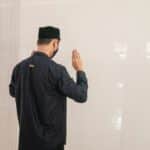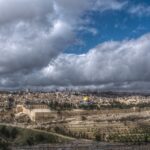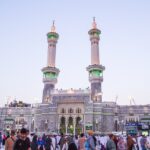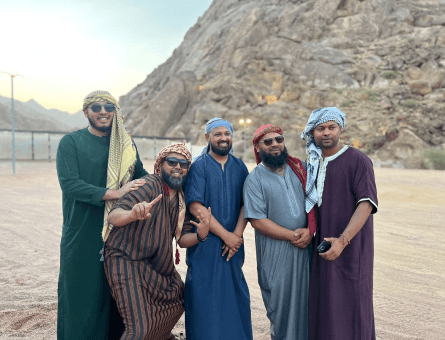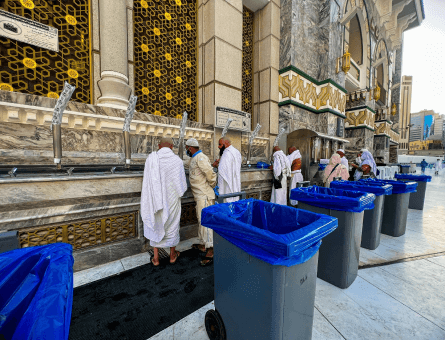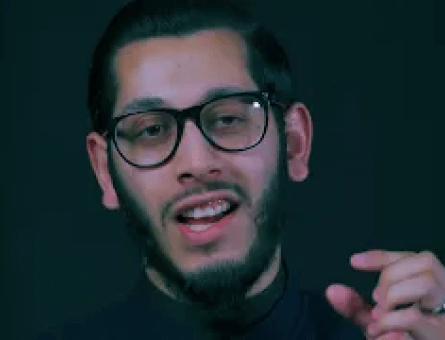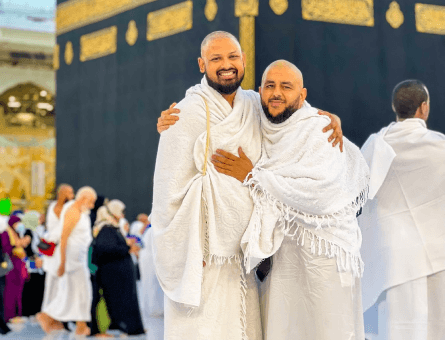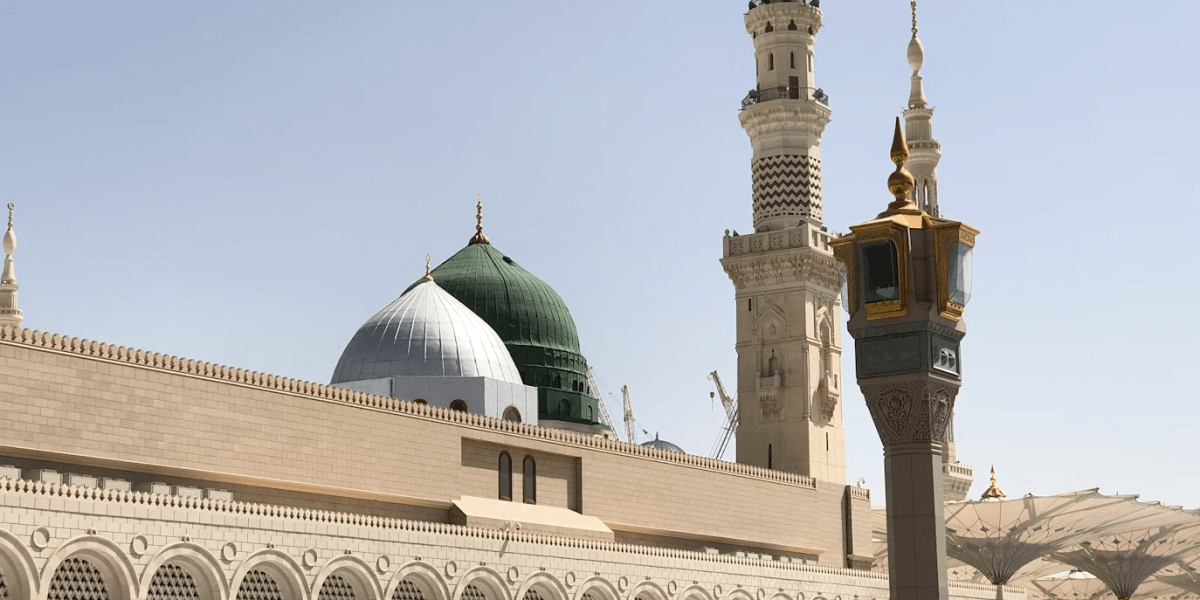15 Important places/ areas inside Masjid Nabawi – Complete interior walkthrough
Previously known as Yathrib, the oasis city of Madinah is home to Masjid Nabawi, the second largest mosque in the world. It was constructed by Prophet Muhammad (PBUH) in 1 AH (622 CE), adjacent to the house where he settled. Masjid Nabawi is the resting place of Prophet Muhammad (PBUH) and houses some of the noblest and most sacred monuments in Islam.
Keep reading to learn more about the 15 must-visit places inside Masjid Nabawi – the Mosque of Prophet Muhammad (PBUH).
Important Places to Visit Inside of Masjid Nabawi
Jaabir (May Allah SWT be pleased with him) reported that Prophet Muhammad (PBUH) said, “One prayer in my mosque is better than one thousand prayers elsewhere, except al-Masjid al-Haraam, and one prayer in al-Masjid al-Haraam is better than one hundred thousand prayers elsewhere.”
Every minaret, pulpit, door, wall, and window inside Masjid Nabawi has a story behind it. A tale that tells you about the roles and sacrifices of the companions of Prophet Muhammad (PBUH) in the establishment of the Islamic community.
Listed below are some of the most important places you should visit inside Masjid Nabawi while keeping their history in mind on your next trip to Medina, the city of Prophet Muhammad (PBUH).
Roda Rasool (SAW)
Also known as the “Tomb of Prophet Muhammad (PBUH),” Roda Rasool (SAW) literally means the garden of the Messenger (PBUH) of Allah SWT. Located on the south corner of the Ottoman prayer hall, Roda Rasool (SAW) is the oldest part of Masjid Nabawi.
This Sacred Chamber marks the spot where the Messenger (PBUH) of Allah SWT fell ill and passed away peacefully. Roda Rasool (SAW) was previously the house of Aisha (RA) and was constructed using unbaked bricks over an area of 4 x 5 metres.
Furthermore, a golden grill is placed at the entrance of the Sacred Chamber, featuring three viewing holes that allow you to see the graves of Prophet Muhammad (PBUH), Abu Bakr (RA), and Umar (RA). Prophet Muhammad (PBUH), with regards to performing Ziyarah of Roda Rasool (SAW), said:
“Whoever visits me after my death is like he who had visited me during my life.” (Tabraani)
“Whoever performs his Hajj in Makkah, then comes to Madinah with the sole aim of visiting me in my Masjid, for him shall be written (the rewards of) two accepted Hajj.” (Daylami)
“When a person stands at my grave reciting blessings on me, I hear it; and whoever calls for blessings on me in any other place, his every need in this world and in the hereafter is fulfilled, and on the day of Qiyamat I shall be his witness and intercessor.” (Bayhaqi)
What Is Inside Rawdah?
According to Islamic scriptures, the Rawdah houses the tombs of Prophet Muhammad (PBUH) and two of his beloved companions, Abu Bakr (RA) and Umar (RA). The graves can be viewed through the viewing holes: the largest one on the left faces the graves of Prophet Muhammad (PBUH), whereas the one in the middle and the one on the right face the graves of Abu Bakr (RA) and Umar (RA), respectively. Little do people know that there’s a fourth grave inside the Rawdah reserved for Isa (AS).
On visiting Roda Rasool (SAW), you must recite, “Assalāmu `alaika Yā Rasūlallāh.” Move a little to the right and say, “Assalāmu `alaika Yā Abā Bakr.” Move further right and say, “Assalāmu `alaika Yā `Umar.”
To highlight the significance of visiting the Rawdah Mubarak, the Messenger (PBUH) of Allah SWT said, “Whoever visits me after my death is like he who had visited me during my life.” (Tabraani)
House of Fatima (RA)
As you walk forward, the door located on the eastern side of the Roda Rasool (SAW) marks the House of Fatima (RA), the dearest and youngest daughter of Prophet Muhammad (PBUH). The House of Fatima (RA) is considered a very sacred and essential place to visit inside Masjid Nabawi.
Mehrab-e-Tahajjud
In line with Bab Jibrail and right behind the Roda Rasool (SAW) is the sacred location where Prophet Muhammad (PBUH) used to offer Tahajjud Salah.
Isa bin Abdullah (RA) said, “When visitors used to depart at night, the Prophet (SAW) used to spread a mat behind Ali’s (RA) hut and used to offer voluntary Salah there. One day one person saw him offering voluntary Salah at this spot during the month of Ramadhan. This person also started offering voluntary Salah at this spot. Another person happened to pass this way, and he started his Salah also. A third person followed these two persons. By and by, a large number of people gathered there. When the Prophet (SAW) saw many people, he wrapped up his praying mat and went away. When these people met the Prophet (SAW) in the morning, they said, “We were only trying to follow you in offering voluntary Salah at night. The Prophet (SAW) said, “I was concerned about you very much. My concern was that Allah SWT may make the offering of night Salah during Ramadan obligatory for you, and you may fail to keep up with it.”
So, if you get a chance to visit Masjid Nabawi, do try to perform the Tahajjiud prayer as it is a Sunnah of Prophet Muhammad (PBUH).
The Praying Spot of Prophet Muhammad (PBUH)
The fifth one, down from the pillar of Aisha (RA), there is a pillar in line with Bab Jibrail, which marks the exact spot where Prophet Muhammad (PBUH) used to perform Salah. It is also known as the place where the Messenger (PBUH) of Allah SWT used to lead the prayers facing Masjid Al-Aqsa, the first Qiblah of Islam.
Riyadhul Jannah
Situated between the Pulpit and Roda Rasool (SAW) is ‘Riyadhul Jannah,’ also known as the Garden of Paradise. Riyadhul Jannah marks the centre of Masjid Nabawi and is denoted by a light green floral carpet, whereas the entire Masjid Nabawi is covered with a red carpet. Prophet Muhammad (PBUH), about visiting Riyadhul Jannah, said, “My pulpit is on one of the hills of paradise.”
Note that Riyadhul Jannah is the most important place to visit inside Masjid Nabawi after Roda Rasool (SAW).
The Messenger (PBUH) of Allah SWT said, “Between my house and my pulpit lies a garden from the gardens of Paradise, and my pulpit is upon my fountain.” (Al-Kauthar, Sahih Al-Bukhari)
Masjid Nabawi Layout

Covering over 20.26 acres of land, present-day Masjid Nabawi is two stories tall. Crowned with the renowned beautiful green dome, the mosque of Prophet Muhammad (PBUH) features ten minarets of 341 feet (104 metres) high altogether, the ancient Ottoman prayer hall, two Ottoman Courtyards which are shaded by 12umbrellas, Maktaba Masjid al-Nabawi (the library of Prophet Muhammad (PBUH)), 27 square-base sliding domes, 42 gates and Jannat ul-Baqi, a graveyard located in the eastern flank of the mosque.
Mimbar (Pulpit)
While delivering long sermons, Prophet Muhammad (PBUH) would get exhausted. And so, to feel a bit relaxed, he (PBUH) would lean against a palm tree that was located near the spot. Witnessing this, the Ansar requested Prophet Muhammad (PBUH), “If you approve, we can make a pulpit for you.” The Messenger (PBUH) of Allah SWT accepted their offer, and a pulpit was constructed. Even today, the Friday and Eid sermons are delivered from this pulpit.
Mehrab-e-Nabawi
Mehrab-e-Nabawi marks the location from where Prophet Muhammad (PBUH) used to lead the congregational prayer after the Qiblah was changed to Masjid Al-Haram. Mehrab-e-Nabawi was built by Umar bin Abdul Aziz.
Even today, the imams of Masjid Nabawi leads Salah from Mehrab-e-Nabawi. Offering Salah at Mehrab-e-Nabawi is a Sunnah of Prophet Muhammad (PBUH).
Ashab Us-Suffah Platform
Ashab Us-Suffah, meaning the ‘People of the Bench,’ is a title given to the beloved companions who devoted their lives for the sake of Islam. These included,
- Abu Hurairah (RA)
- Ka’ab ibn Malik (RA)
- Abu Dhar al-Ghifari (RA)
- Bilal bin Ribah (RA)
- Subaib ibn Sanan Roomi (RA)
- Abdullah bin Masood (RA)
- Huzaifah bin Yaman (RA)
- Hanzalah bin Abi Amr (RA)
- Salman al-Farsi (RA)
Although originally the Ashab Us-Suffah Platform was on the north wall of Masjid Nabawi, it was moved to the back side after the mosque’s extension in 7 AH.
The House of Abdullah bin Umar (RA)
Son of Umar bin Khattab (RA), Abdullah bin Umar (RA) was one of the most devoted companions of Prophet Muhammad (PBUH) and a prominent authority in hadith and law. His house is located inside Masjid Nabawi on the eastern side of the Mehrab.
Bilal (RA) used to call Adhan while standing on the pillar of the house of Abdullah bin Umar (RA). The window of this house is opposite the Roda Rasool (SAW), which gives it great importance in Islam.
The House of Abu Bakr (RA)
Abu Bakr (RA) was a very close friend and companion of Prophet Muhammad (PBUH). He was one of the first people to accept Islam. During the life of Prophet Muhammad (PBUH), the door of Abu Bakr’s (RA) house was situated adjacent to the western wall of Masjid Nabawi.
The Messenger (PBUH) of Allah SWT ordered the building of another door on the eastern side of the mosque. The purpose of the door was to provide ease of access to Masjid Nabawi for Abu Bakr (RA) and his family.
Prophet Muhammad (PBUH) instructed not to close the door of Abu Bakr’s (RA) house. Therefore, during the extension of Masjid Nabawi, Umar (RA) shifted the door to the western wall, perfectly in line with the original door.

Can Non-Muslims Go Inside Masjid Nabawi?
Unfortunately, non-Muslims are not allowed to enter Nabawi Square, where Masjid Nabawi is located. In case a non-Muslim tries to enter the premises of the sacred mosque, they can be penalised with fines.
House of Usman (RA)
Usman (RA) was the third caliph of Islam and the son-in-law of Prophet Muhammad (PBUH). The land of his house can be located in the open area within the boundaries of Masjid al Nabawi. It is the same house where Egyptian rebels assassinated Usman (RA).
House of Abu Ayyub Ansari (RA)
After migrating from Makkah to Medina, Prophet Muhammad (PBUH) stayed in the house of Abu Ayyub Ansari (RA) for the first few months. Masjid al Nabawi was initially constructed adjacent to the house of Abu Ayyub Ansari (RA).
It is said that Prophet Muhammad (PBUH) used to stand on the second floor of his house, and Abu Ayyub Ansari (RA) used to share his meals with Allah SWT’S Messenger (SAW). Today, the house is situated inside the mosque of Prophet Muhammad (PBUH).
House of Hafsa (RA)
Hafsa (RA) was the daughter of Umar (RA) and the wife of Prophet Muhammad (PBUH). The house of Hafsa (RA) was originally located where the red carpet in front of Roda Rasool (SAW) is today.
Garden of Abu Talha (RA)
Abu Talha (RA) was a rich man who owned the finest gardens in Medina. One of his favourite gardens was “Bir Ha”, which was located near Masjid Nabawi. Prophet Muhammad (PBUH) often visited this garden and drank the sweet water from its well.
It was later in his life that Abu Talha (RA) presented this garden as a gift to the Messenger (PBUH) of Allah SWT for the sake of Islam. However, Prophet Muhammad (PBUH) advised him to distribute it amongst his heirs. Even though the Garden of Abu Talha (RA) is no longer there, the land is a part of the rear area of Masjid Nabawi.
The fact that Abu Talha (RA)donated the garden in the name of Allah SWT teaches Muslims that in order to attain the ultimate reward from Allah SWT in the Hereafter, one must give the best of their wealth to charity.
Houses of Companions Along Masjid Nabawi’s Qiblah Wall
During the lifetime of Prophet Muhammad (PBUH), the houses of some companions were located inside Masjid Nabawi. Even though not all of the houses are present within the sacred mosque, the houses of some companions are still situated along the Qiblah wall at the back of Bab Salam.
The companions whose homes are still inside Masjid Nabawi include Jafar (RA), Abbas (RA), Ammar bin Yasir (RA), and Naufal bin Harris (RA).
Best Duas to Read While in Masjid Nabawi

Ideally, it is recommended to enter Masjid al Nabawi from Bab Jibrail, as archangel Jibril (AS) used this door when he brought revelations to Prophet Muhammad (PBUH). In addition to this, the Messenger (PBUH) of Allah SWT also entered Masjid Nabawi through Bab Jibrail.
So, when you arrive at the door of the Prophet’s (PBUH) Mosque, put your right foot forward and recite the following dua before entering the sacred mosque:
.بِسْمِ اللهِ، اللَّهُمَّ صَلِّ عَلَى مُحَمَّدٍ. اللَّهُمَّ اغْفِرْ لِي وَافْتَحْ لِي أَبْوَابَ رَحْمَتِك
Transliteration: Bismi-llāh, Allāhumma ṣalli alā Muhammad. Allāhumma-ghfir lī wa-ftaḥ lī abwāba raḥmatik.
Translation: In the name of Allah, send blessings upon Muhammad (PBUH). O Allah, open for me the doors of Your Bounty.
While there are many ways to offer salam, Islamic scholars have advised that you should at least say:
اَلسَّلَامُ عَلَيْكَ يَا رَسُوْلَ اللهِ
Transliteration: As-salāmu ‘alayka yā rasūlAllāh.
Translation: Peace be upon you, O Messenger of Allah.
اَلسَّلَامُ عَلَيْكَ يَا رَسُوْلَ اللهِ
السَّلَامُ عَلَيْكَ يَا خَيْرَةَ اللهِ مِنْ خَلْقِهِ
اَلسَّلَامُ عَلَيْكَ يَا حَبِيْبَ اللهِ
اَلسَّلَامُ عَلَيْكَ يَا سَيِّدَ الْمُرْسَلِيْنَ وَخَاتَمَ النَّبِيِّيْنَ
السَّلَامُ عَلَيْكَ وَعَلَى آلِكَ وَأَصْحَابِكَ وَأَهْلِ بَيْتِكَ وَعَلَى النَّبِيِّيْنَ وَسَائِرَ الصَّالِحِيْنَ.
أَشْهَدُ أَنَّكَ بَلَّغْتَ الرِّسَالَةَ وَأَدَّيْتَ الأَمَانَةَ وَنَصَحْتَ الأُمَّةَ
جَزَاكَ اللهُ عَنَّا أَفْضَلَ مَا جَزَى رَسُوْلَاً عَنْ أُمَّتِه
Transliteration: As-salāmu ‘alayka yā rasūla llāh.
As-salāmu ‘alayka yā khyarata llāhi man khalqihi.
As-salāmu ‘alayka yā ḥabiba llāh.
As-salāmu ‘alayka yā sayyida l-mursalina wa khātama n-nabiyyīn.
As-salāmu ‘alayka wa ‘ala ālika wa aṣḥabika wa ahli baytika wa ‘ala an-nabīyyina wa sā’ira ṣ-ṣaliḥin.
Ashhadu annaka balaghta r-risāla wa addayta l-amāna wa naṣaḥta l-ummah.
Jazāka llāhu ‘anna ‘afḍala ma jaza rasūlan ‘an ummatihi.
Translation: Peace be upon you, O Messenger of Allah.
Peace be upon you O choicest creation of Allah.
Peace be upon you, O beloved of Allah.
Peace be upon you, O leader of all messengers, seal of the prophets.
Peace be upon you, upon your family, upon your companions, upon your wives, upon all the Prophets and all pious people.
I bear witness that you have conveyed the message, fulfilled the trust and advised the people with the best of advice.
May Allah reward you on our behalf, the best reward he would grant a messenger.
يَا رَسُوْلَ اللهِ، أَسْأَلُكَ الشَّفَاعَةَ وَأَتَوَسَّلُ بِكَ إِلَى اللهِ أَنْ أَمُوْتَ مُسْلِمَاً عَلَى مِلَّتِكَ وَسُنَّتِكَ
Translation: Yā rasūla llāh as’aluka ash-shafā’ata wa atawassalu bika ila llāhi ‘an ‘amūta Musliman ‘ala millatika wa sunnatik.
Transliteration: O Rasulullah! I request your intercession, and I ask Allah, through you, to enable me to die on your religion and your Sunnah.
اللهُمَّ إِنِّيْ أَسْئَلُكَ وَأَتَوَجَّهُ إِلَيْكَ بِنَبِيِّكَ مُحَمَّدٍ صَلَّى اللهُ عَلَيْهِ وَسَلَّمَ نَبِيِّ الرَّحْمَةِ
يَا مُحَمَّدُ إِنِّيْ أَتَوَجَّهُ بِكَ إِلَى رَبِّيْ فِيْ حَاجَتِيْ لِيَقْضِيْ لِيْ
اَللَّهُمَّ شَفِّعْهُ فِيَّ
Transliteration: Allāhumma innī as’aluka wa atawajjahu ilayka bi nabīyyika Muḥammadin ṣallā llāhu ‘alayhi wa sallama nabiyya r-raḥma.
Yā Muḥammad(u) innī atawajjahu bika ila rabbī fī ḥājatī liyaqḍī lī.
Allāhumma shaffi’hu fī.
Translation: O Allah! I ask You, and I turn to You using Your Prophet, the Prophet of mercy, as an intermediary.
O Muhammad! I turn to my Lord by means of you for my need, that He fulfils it.
O Allah! Accept his intercession in my favour.
List of Imams in Masjid Nabawi
Becoming the Imam of the Mosque of Prophet Muhammad (PBUH) is one of the most honourable and respected professions in the world. Here is a list of all the Imams of Masjid al-Nabawi.
These Imams must have memorised the Holy Quran and possess good articulation, be certified with an exceptionally pleasant voice and recitation rendition while observing moderation.
- Sheikh Ali ibn Abdur-Rahman al-Hudhaify
- Sheikh Abdul Mohsen Al Qasim
- Sheikh Ahmed Bin Humaid
- Sheikh Saleh Al Badir
- Sheikh Ahmed bin Ali Al-Hudhaifi
- Sheikh Khaled Al Muhanna
- Sheikh Abdullah bin Abdul Rahman
How Many Doors Does Masjid Nabawi Have?
Constructed by Prophet Muhammad (PBUH), originally Masjid Nabawi had only three gates: Bab un-Nisa, Bab Jibrail, and Bab ur Rahma. However, with time, several expansions have been made to the Mosque of Prophet Muhammad (PBUH). Today, Masjid Nabawi has a total of 42 doors.
Summary – Inside Masjid Nabawi
The feeling of visiting the city of Prophet Muhammad (PBUH) and especially Masjid al Nabawi is one of a kind. You feel honoured and excited to be visiting one of the most significant landmarks in Islam.
Masjid Nabawi is the second-largest and oldest mosque in Islamic history and one of the most peaceful places on Earth. Spread over 20.26 acres of land, Masjid Nabawi is home to some of the most sacred monuments in Islam.
So, if you are planning to go to Madinah, make sure to visit all the important places inside Masjid Nabawi, as discussed in this article.
Explore The New Pilgrim App
The Ultimate App
for Hajj and Umrah!





